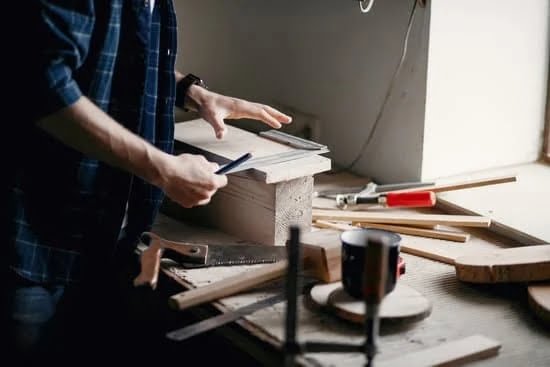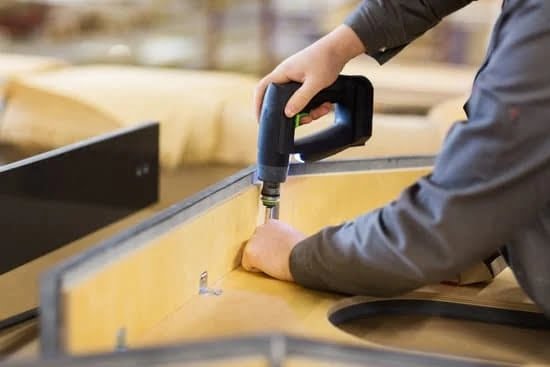Are you interested in trying your hand at woodworking but not sure where to start? Whether you’re looking to pick up a new hobby or want to tackle some DIY projects around the house, finding the right first woodworking project is essential. In this article, we’ll explore what makes a good first woodworking project, the benefits of starting with an easy project, and provide tips and resources for beginners.
For those new to woodworking, it can be overwhelming to know where to begin. What is a good first woodworking project for someone just starting out? This is a common question that many beginners ask, and we’re here to help answer that question. Starting with a simple and achievable project can help build confidence and skills, setting the stage for future woodworking endeavors.
Before diving into specific projects, it’s important to understand the benefits of starting with an easy woodworking project. Whether it’s learning basic techniques, gaining experience using essential tools, or simply experiencing the satisfaction of creating something with your own hands, starting small can lead to big rewards. Additionally, beginning with a manageable project can help prevent frustration and burnout, making the learning process more enjoyable.
Benefits of Starting With an Easy Woodworking Project
Starting with an easy woodworking project has a variety of benefits for beginners. Whether you are looking to develop a new hobby or acquire a new skill, starting with simple woodworking projects can help build confidence and provide a sense of accomplishment. Here are a few benefits to consider when starting with an easy woodworking project.
Building Confidence
One of the main benefits of starting with an easy woodworking project is the opportunity to build confidence. As a beginner, it can be intimidating to tackle complex projects that require advanced skills and techniques. By starting with simpler projects, such as building a basic shelf or a simple picture frame, you can gain valuable experience and confidence in working with wood and using basic tools.
Understanding Basic Techniques
Another benefit of beginning with easy woodworking projects is the opportunity to understand and practice basic woodworking techniques. Simple projects often involve using fundamental skills such as measuring, cutting, sanding, and assembling. By mastering these basic techniques on easier projects, beginners can develop a solid foundation for more advanced woodworking endeavors in the future.
Quick Results
Starting with an easy woodworking project allows beginners to see relatively quick results from their efforts. This can be motivating and rewarding, especially for those who are new to woodworking. Seeing the end product of their work can encourage beginners to continue learning and exploring more challenging woodworking projects in the future.
Essential Tools and Equipment for Beginners
When starting out in woodworking, it’s important to have the right tools and equipment to ensure that your projects turn out as intended. Here are some essential tools and equipment for beginners to consider investing in:
1. Safety Gear: The first priority when working with wood is safety. Always wear safety goggles, a dust mask, and ear protection to protect yourself from potential hazards.
2. Measuring and Marking Tools: Accurate measuring and marking are crucial for any woodworking project. You’ll need a tape measure, combination square, marking gauge, and a pencil to ensure precise cuts and joints.
3. Hand Tools: While power tools can make the job faster and easier, having basic hand tools like a hammer, chisels, hand saws, and screwdrivers is essential for more detailed work.
4. Power Tools: As you progress in your woodworking journey, you may want to invest in power tools such as a circular saw, jigsaw, drill/driver, and orbital sander for more efficient cutting and shaping of wood.
5. Clamps: Clamps are vital for holding pieces of wood together while glue dries or while making cuts. Invest in a variety of sizes and types of clamps for different projects.
6. Workbench: A sturdy workbench provides a stable surface for working on your projects. It should be at a comfortable height and have enough space for maneuvering your materials.
By having these essential tools and equipment on hand, beginners can start their woodworking journey confidently while setting themselves up for success in their first projects.
Safety Tips for Woodworking Newbies
When it comes to woodworking, safety should always be a top priority, especially for beginners who may not be familiar with the potential risks involved. Here are some essential safety tips for woodworking newbies that will help ensure a safe and enjoyable experience in the workshop.
Wear the Right Safety Gear
One of the most important aspects of woodworking safety is wearing the appropriate safety gear. This includes protective eyewear to shield your eyes from sawdust and flying debris, as well as hearing protection to reduce the long-term impact of loud machinery. Additionally, wearing a dust mask or respirator can protect you from inhaling harmful particles while working with wood.
Keep Your Workspace Organized
A cluttered workspace can lead to accidents and injuries, so it’s important to keep your area tidy and organized. Ensure that tools are properly stored when not in use to prevent tripping hazards, and always clean up sawdust and wood shavings to maintain a clear work surface. By keeping your workspace neat and organized, you can minimize the risk of accidents.
Use Tools Safely
Proper tool usage is crucial for woodworking safety. Always follow the manufacturer’s guidelines for operating power tools, and never bypass safety features such as guards or blade brakes. It’s also important to keep your tools sharp and well-maintained to prevent kickback and other potential hazards.
These safety tips are just a starting point for beginners in woodworking – they should serve as a reminder to prioritize safety at all times while working on projects in the workshop. By following these guidelines and taking necessary precautions, aspiring woodworkers can ensure a safe and fulfilling experience as they embark on their first woodworking projects.
Top 5 Easy Woodworking Projects for Beginners
When starting out in the world of woodworking, it’s important to begin with simple projects that allow you to hone your skills and build your confidence. Here are five easy woodworking projects that are perfect for beginners:
1. Build a Wooden Serving Tray: A wooden serving tray is a great project for beginners, as it involves basic assembly and finishing techniques. You can personalize it by adding handles or decorative accents, making it both functional and stylish.
2. Create a Wooden Picture Frame: Making a simple wooden picture frame is an excellent way to practice measuring, cutting, and joining wood. Plus, you’ll end up with a beautiful keepsake that you can use to display your favorite photos or artwork.
3. Construct a Basic Bookshelf: A small, freestanding bookshelf is a practical and achievable project for woodworking newcomers. It will teach you how to assemble different pieces of wood while creating a useful piece of furniture for your home.
4. Craft a Wooden Jewelry Box: Building a wooden jewelry box allows you to practice constructing smaller pieces with intricate details. You can experiment with different types of joinery and embellishments as you create a lovely storage solution for your accessories.
5. Make a Simple Step Stool: Crafting a step stool is an ideal project for learning about the structure and stability of furniture pieces. This versatile item can be used in various rooms around the house and serves as an excellent introduction to basic woodworking principles.
These projects not only provide hands-on experience in using tools and working with wood but also result in practical items that you can use or gift to others. As you work on these beginner-friendly projects, don’t be afraid to make mistakes – they are all part of the learning process. With the right guidance and patience, even first-time woodworkers can successfully complete these simple yet rewarding woodworking endeavors.
Step-by-Step Guide for a Simple Woodworking Project
If you are new to woodworking and wondering what is a good first woodworking project, then you have come to the right place. Starting with a simple woodworking project is not only a great way to get hands-on experience but also build confidence in your skills. In this section, we will provide you with a step-by-step guide for a simple woodworking project that is perfect for beginners.
First and foremost, choose a straightforward project that aligns with your skill level and interests. A popular first woodworking project for beginners is building a basic bookshelf or creating a wooden picture frame. Once you have decided on the project, gather all the necessary tools and materials. Essential tools for this type of project may include a saw, hammer, nails or screws, measuring tape, sandpaper, and wood glue.
Next, carefully measure and cut the wood according to your project design. It’s important to pay close attention to the measurements to ensure accuracy. Assemble the pieces using nails or screws as per the instructions provided in your chosen woodworking plan. Once assembled, sand down any rough edges and apply wood finish if desired.
Lastly, take your time throughout each step of the process and don’t be afraid to ask for help if needed. Remember, practice makes perfect so embrace any mistakes as part of your learning journey as a beginner woodworker. With patience and dedication, completing your first woodworking project will give you the confidence to tackle more challenging projects in the future.
Common Mistakes to Avoid for First-Time Woodworkers
When starting out in the world of woodworking, it’s important to be aware of common mistakes that beginners often make. By learning from these mistakes, you can save yourself time, money, and frustration. Here are some key errors to avoid as a first-time woodworker:
One common mistake is not properly preparing the wood before beginning a project. It’s essential to sand the wood and remove any rough spots or imperfections for a flawless finish. Additionally, failing to measure accurately can lead to pieces that don’t fit together properly, resulting in a less-than-ideal final product.
Another important aspect for first-time woodworkers to consider is using the wrong type of wood for a project. Some woods are better suited for certain projects than others, so it’s crucial to do your research and choose the right material for your specific project.
Furthermore, many beginners make the mistake of neglecting safety precautions. It’s imperative to use protective gear such as goggles and gloves when woodworking to prevent accidents and injuries.
By being aware of these common mistakes and taking steps to avoid them, first-time woodworkers can set themselves up for success in their new hobby.
| Common Mistakes | Details |
|---|---|
| Improper preparation of wood | Failing to sand and measure accurately |
| Using wrong type of wood | Not researching the best material for the project |
| Neglecting safety precautions | Failing to use proper protective gear when woodworking |
Resources for Learning More About Woodworking and Finding Project Ideas
Woodworking is a timeless and fulfilling hobby that allows you to create functional and beautiful items from scratch. As a beginner, it’s essential to equip yourself with the right resources for learning more about woodworking and finding project ideas. This will help you build a strong foundation of knowledge and skills as you embark on your woodworking journey.
One of the best resources for learning about woodworking is books. There are countless books available that cover everything from basic woodworking techniques to advanced skills. Look for books specifically tailored to beginners, as they often provide step-by-step instructions and valuable tips for starting out in the craft. Some popular titles include “The Complete Manual of Woodworking” by Albert Jackson and “Woodworking Basics: Mastering the Essentials of Craftsmanship” by Peter Korn.
Another valuable resource for beginner woodworkers is online tutorials and videos. Platforms like YouTube offer a wealth of instructional videos that cover various woodworking topics, including tool usage, project ideas, and woodworking techniques. Many experienced woodworkers share their knowledge through these platforms, making it an accessible and cost-effective way to learn new skills.
Finally, consider joining a local woodworking club or taking a class at a community college or trade school. These in-person opportunities can provide hands-on instruction, mentorship from experienced woodworkers, and access to specialized tools and equipment. Additionally, being part of a community of fellow woodworking enthusiasts can offer support and inspiration as you pursue your first woodworking projects.
| Resource | Description |
|---|---|
| Books | Valuable instructional resources tailored to beginners |
| Online Tutorials and Videos | Access to a wealth of instructional content covering various topics |
| Local Woodworking Clubs/Classes | In-person opportunities for hands-on instruction, mentorship, and access to specialized tools |
Conclusion
In conclusion, starting with an easy woodworking project can be a great way for beginners to dip their toes into the world of woodworking. Not only does it allow for a gradual learning curve, but it also offers a sense of accomplishment and instills confidence to take on more challenging projects in the future. By choosing simple projects and following safety guidelines, beginners can develop essential skills and become more comfortable working with wood and tools.
It is crucial for beginners to familiarize themselves with the essential tools and safety tips before diving into their first woodworking project. Understanding how to use tools properly and taking necessary safety precautions can prevent accidents and make the woodworking experience more enjoyable. Additionally, seeking out resources for learning about woodworking techniques and finding project ideas can help beginners expand their knowledge and spark creativity for future projects.
Ultimately, embarking on the journey of woodworking as a beginner can be an exciting and rewarding experience. With the right guidance, patience, and dedication, beginners can discover the joy of creating something with their own hands while mastering new skills along the way. So, what is a good first woodworking project? The answer lies in starting small, staying safe, seeking knowledge, and embracing the satisfaction that comes with bringing a piece of wood to life through craftsmanship.
Frequently Asked Questions
What Are Good Beginner Woodworking Projects?
Good beginner woodworking projects include simple items like a basic workbench, a wooden serving tray, or a small storage box. These projects allow beginners to practice fundamental woodworking skills while creating something useful.
What Woodworking Project Sells the Most?
Woodworking projects that sell the most are often practical items with mass appeal, such as furniture like tables and chairs, home decor items like shelves or picture frames, and smaller items like cutting boards or wooden utensils. Customized pieces also tend to sell well.
How Do I Start Woodworking From Scratch?
To start woodworking from scratch, it’s important to first familiarize oneself with the necessary tools and their uses. Learning basic techniques through tutorials and classes can help build foundational skills. Starting with simple projects and gradually working up to more complex ones is key to gaining confidence and expertise in woodworking.

Hi everyone! I’m a woodworker and blogger, and this is my woodworking blog. In my blog, I share tips and tricks for woodworkers of all skill levels, as well as project ideas that you can try yourself.





